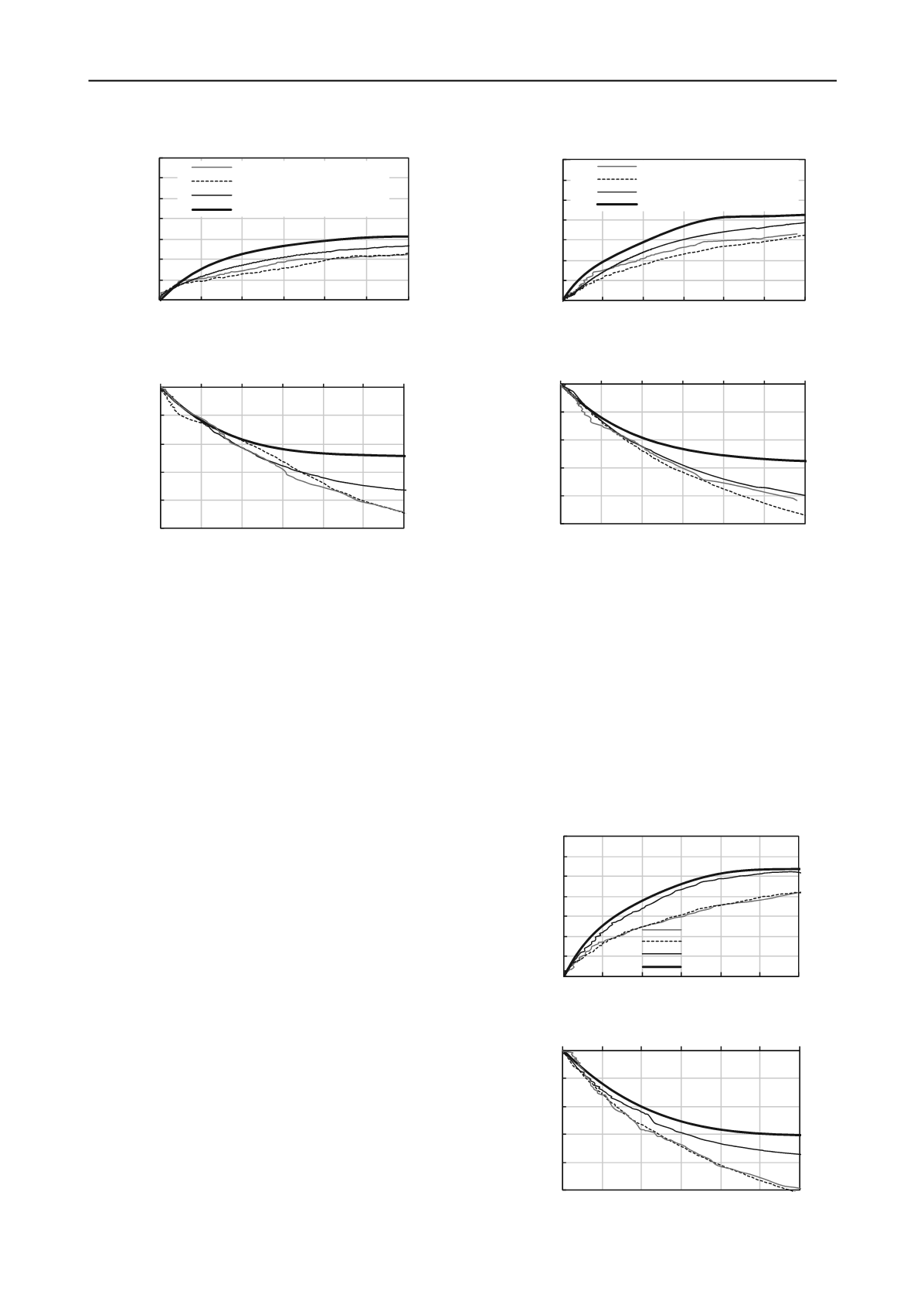
941
Technical Committee 104 /
Comité technique 104
Figure 3. Variation of deviatoric stress and volumetric strain
with axial strain (A
c
/A
s
=7.9%).
Results presented in Figs. 3 to 5 indicate that for the
smallest area replacement ratio used in this study
(A
c
/A
s
=7.9%), no improvement was evident in the stress-strain
response compared to the control clay specimen. In fact, slight
reductions in the load-carrying capacity were measured at all
levels of strain. For the higher area replacement ratios, clear and
consistent improvements in the stress-strain response were
observed for all effective confining pressures. With regards to
the volumetric strains, results indicate that the measured
volumetric strains were contractive for all the specimens tested.
However, the volumetric strain at failure was found to decrease
for specimens that were reinforced with 3-cm and 4-cm sand
columns (higher area replacement ratios), compared to control
clay specimens and specimens reinforced with 2-cm columns.
This reduction in volumetric strains at failure for the reinforced
clay specimens is expected and is due to the dilative nature of
the sand columns, particularly at higher area replacement ratios.
3.3. Effect of Sand Columns on Deviatoric Stress at Failure
The percent improvement in the deviatoric stress at failure for
the series of tests involving area replacement ratios of 7.9%,
17.8%, and 31.2% was calculated and presented in Fig. 6 as a
function of the effective confining pressure. Results in Fig. 6
indicate that the use of 2-cm diameter sand columns (area ratio
of 7.9%) did not result in increases in the deviatoric stress at
failure. For the higher area replacement ratios of 17.8% and
31.2%, improvements ranging from 17% to 25% and from 28%
to 38% were observed in the deviatoric stress at failure,
respectively.
The calculated percent improvement in the deviatoric stress
at failure was also plotted in Fig. 7 as a function of the area
replacement ratio. Interestingly, the results in Fig. 7 indicate
that for the smallest effective confining pressure of 100 kPa, the
percent improvement increased at the same rate as the area
replacement ratio was increased from 7.9% to 17.9% to 31.2%.
For the tests conducted at the higher confining pressures of 150
kPa and 200 kPa, the rate of improvement in the deviatoric
stress at failure decreased as the area replacement ratio was
increased from 17.9% to 31.2%. This decrease in the percent
improvement could be attributed to the mode of failure
observed for the samples reinforced at an area replacement ratio
Figure 4. Variation of deviatoric stress and volumetric strain
with axial strain (A
c
/A
s
=17.8%).
-5
-4
-3
-2
-1
0
0 2 4 6 8 10 12
Volumetric Strain (%)
0
50
100
150
200
250
300
350
0 2 4 6 8 10 12
Deviatoric stress (kPa)
Axial Strain (%)
control
Area Replacement = 7.9%
Area Replacement = 17.8%
Area Replacement = 31.2%
-5
-4
-3
-2
-1
0
0 2 4 6 8 10 1
Volumetric Strain (%)
2
0
50
100
150
200
250
300
350
0 2 4 6 8 10 1
Deviatoric stress (kPa)
Axial Strain (%)
2
Control
Area Replacement = 7.9%
Area Replacement = 17.8%
Area Replacement = 31.2%
of 31.2% and tested at confining pressures of 150 kPa and 200
kPa. For these cases, clear shear planes formed at the bottom of
the sample (see Fig. 2c) indicating a possible premature failure
in the lower-half of the sample due to elevated stresses in the
sand columns that are bearing on the unreinforced clay.
3.4. Effect of Sand Columns on Shear Strength Envelope
Figure 8 shows the effective Mohr-Coulomb envelopes
corresponding to the different area replacement ratios used in
this study. As expected the Mohr-Coulomb failure envelope for
the specimens reinforced with the smallest area replacement
ratio of 7.9% was almost identical to that of the control clay,
with an effective apparent cohesion c’ = 0 kPa and an effective
friction angle of about 21
o
.
Figure 5. Variation of deviatoric stress and volumetric strain
with axial strain (Ac/As=31.2%).
-5
-4
-3
-2
-1
0
0 2 4 6 8 10 1
Volumetric Strain (%)
2
0
50
100
150
200
250
300
350
0 2 4 6 8 10 12
Deviatoric stress (kPa)
Axial Strain (%)
control
Area Replac. = 7.9%
Area Replac.= 17.8%
Area Replac. = 31.2%


